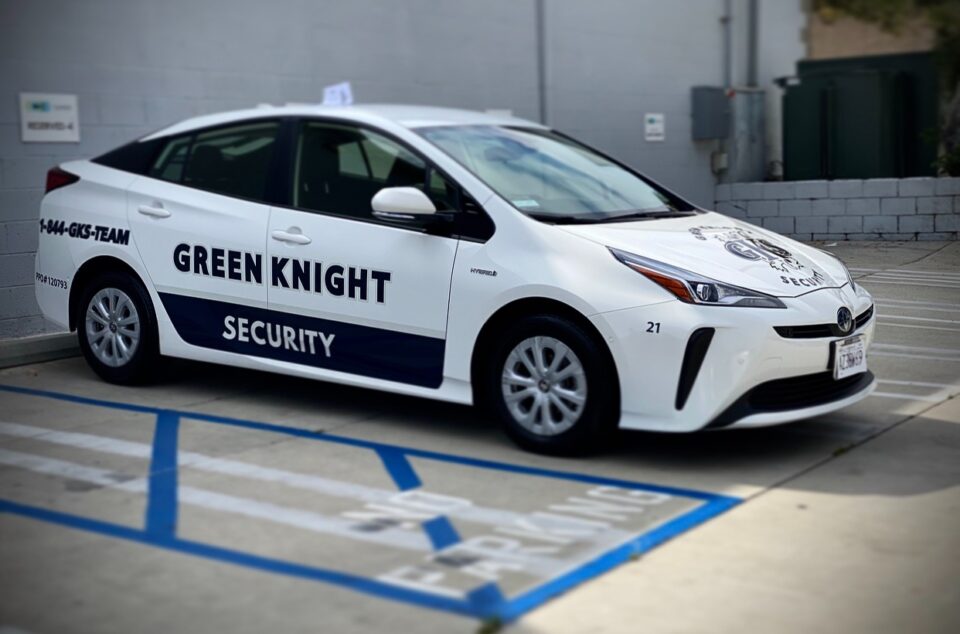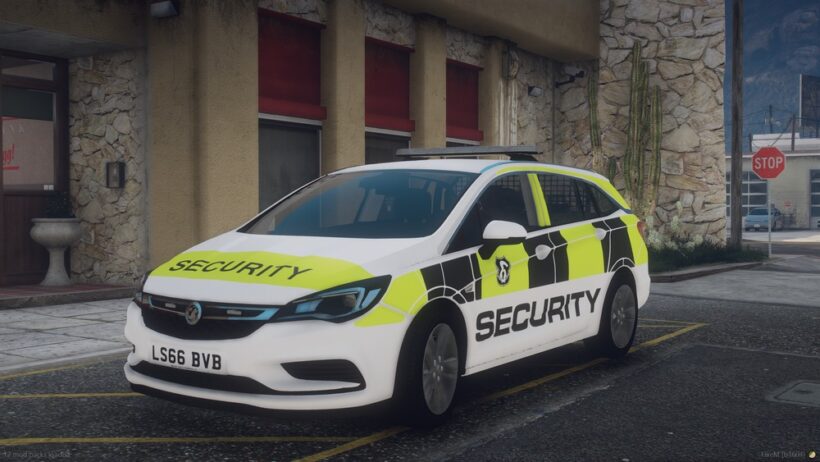A professional-looking security car sends the message that an area is under watch. Conversely, a sloppy or unofficial-looking vehicle can erode client confidence and even cause legal headaches if it’s mistaken for law enforcement.
With all of that in mind, the security vehicle graphics you choose will ultimately play a huge part in how your security vehicles are perceived.
Security Vehicle Graphics: Tips for Looking Professional
So, how do you get the right look? Below are the top tips – from branding to legal must-dos – to help your security vehicles command respect while staying within the law.
1. Embrace a Cohesive Brand Design
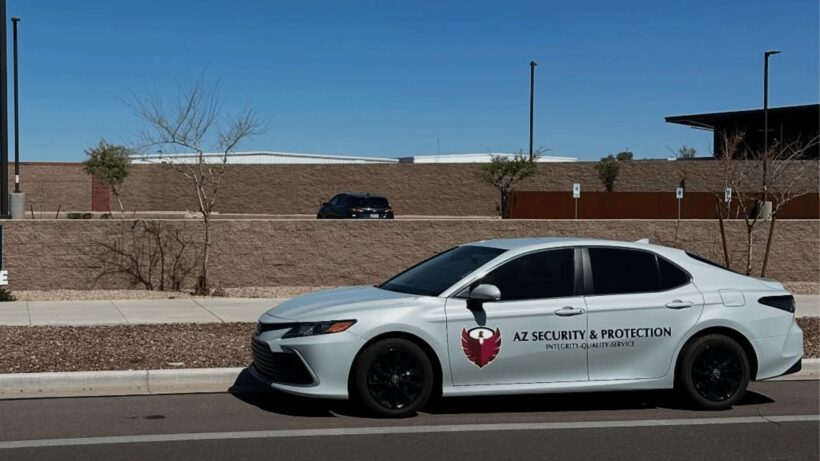
One of the biggest mistakes is treating security vehicle graphics as an afterthought. Instead, approach your fleet with the same branding care you would for your company’s uniforms or signage. This means using a consistent color scheme, logo, and design elements across all vehicles.
If possible, invest in partial or full vehicle wraps that incorporate your company’s colors and branding in a clean, professional way. A cohesive design instantly conveys that your team is official and organized.
For example, if your corporate colors are blue and white, you might use a blue stripe or pattern along the sides of each vehicle with your company’s logo prominently displayed on the doors.
Avoid a piecemeal look (like random magnet signs or stickers); a unified wrap or decal package looks more intentional and authoritative.
Remember that your vehicles often serve as moving advertisements for your services.
A well-branded security car parked in front of a client’s site not only warns potential intruders but also increases your company’s visibility in the community. Consistency in design – using the same fonts, colors, and layout on each car – makes your fleet more memorable and trustworthy. It’s a way of showing your business pays attention to detail.
Clients and the public should be able to pinpoint a vehicle as belonging to your security firm at a glance, whether they see it in a parking lot or driving by on patrol.
2. Make “Security” Impossible to Miss
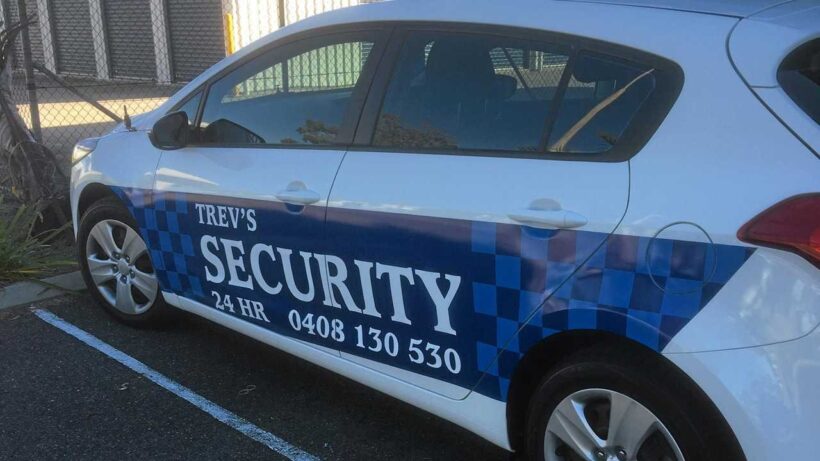
Your vehicles should clearly tell people that they are security, not law enforcement. This is both for professionalism and safety. The word “SECURITY” should be one of the most prominent pieces of text in your design. Most companies choose to display it on both sides of the vehicle and the rear.
High-contrast lettering helps ensure it catches the eye, and that’s why you’ll see a lot of security vehicles with a black and white color combination. Passersby and clients shouldn’t have to guess who is in that car; they should see “Security” and immediately understand its role.
Prominent security markings also differentiate your team from police or other agencies.
In fact, making the word “security” highly visible is paramount so the public doesn’t confuse private security with law enforcement.
For example, you might have “SECURITY” in large, reflective block letters on your doors and across the back hatch.
People will understand that they need to contact police for emergencies, but that your officers are on site to deter crime and report issues.
3. Use Reflective and High-Visibility Elements
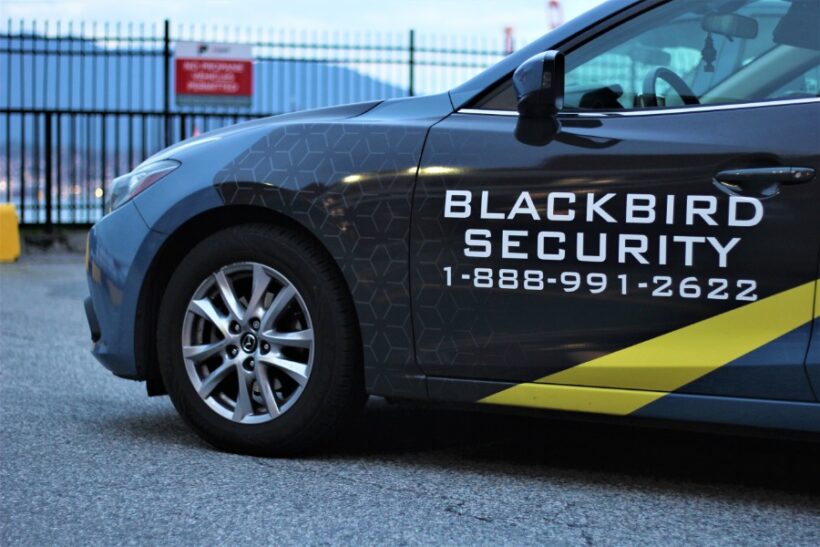
Professional security vehicles don’t just look good in daylight – they’re also visible at night. Incorporating reflective decals or striping into your design is a smart way to increase professionalism and safety.
Reflective graphics catch the light from headlights and street lamps, making your vehicle stand out in the dark. Along with helping other drivers see you (preventing accidents when you’re stopped for an incident), it also reinforces the security presence after hours.
For instance, outlining the word “SECURITY” or your company logo in reflective vinyl can make it pop at night without being too flashy during the day.
Most security companies actually want their vehicles to be highly visible, because an obvious security presence can deter trouble before it starts. Using reflective materials is a smart way to achieve that visibility. Consider adding reflective stripes along the sides or reflective badges on the hood and trunk.
You can also use high-visibility colors (like bright yellows or greens) as accent stripes if they suit your brand; just be cautious not to overdo it. The goal is a professional look, not a circus wagon.
A few well-placed reflective elements – think rear bumper chevrons or a strip along the vehicle’s side – can make your fleet look more official by mirroring some of the safety practices used by police and emergency vehicles (without impersonating them).
4. Place Logos and Contact Info Strategically
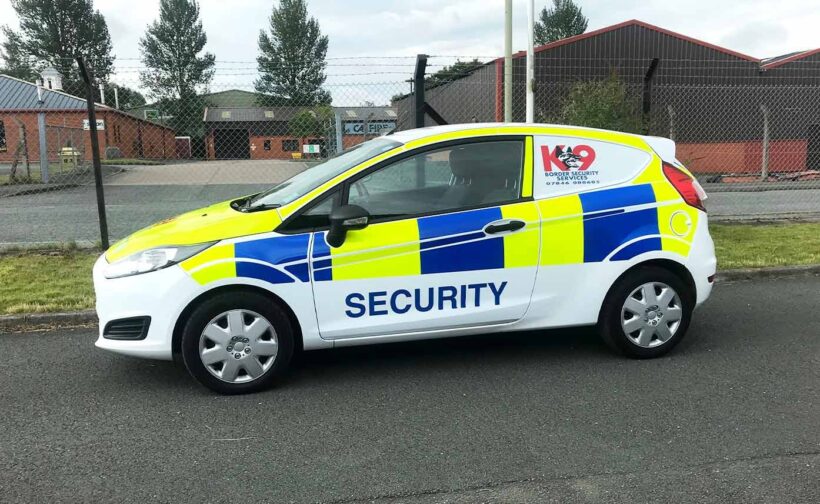
When you think of a legitimate-looking security vehicle versus one that’s less trustworthy, what comes to mind? One differentiating factor is often that a legitimate security vehicle provides clear information about who is patrolling and how to reach them.
Logo placement and other details are vital. Typically, the side doors are prime real estate for your security company logo and name. This is where people naturally look (as it’s the same spot where many police vehicles have their agency name). Ensure your logo is high-resolution and large enough to be seen from a distance.
Along with the logo, include a phone number or website on the vehicle. Often, the rear quarter panel or the back of the car is a good spot for contact info. This way, if someone needs to report an issue or verify that your officers are supposed to be on site, the information is simple to find.
Strive for a clean, uncluttered look when you’re placing text and logos. Keep in mind that too much small text can make a vehicle look busy and unprofessional. Instead, focus on the basics: company name, the word “Security,” a contact number, and maybe a unit or vehicle ID number if you use them.
Balance these elements on the vehicle’s surfaces. For example, you might have your logo and “Security Services” on the front doors, the large “SECURITY” identifier on the rear doors or fenders, and a company website or phone number across the back.
This hierarchy of information means that as someone approaches the vehicle, they first see who you are (the security company), then what you do (security), and then how to contact you. The result is a patrol car that looks professional and is informative to the public.
5. Steer Clear of Law Enforcement Imitation
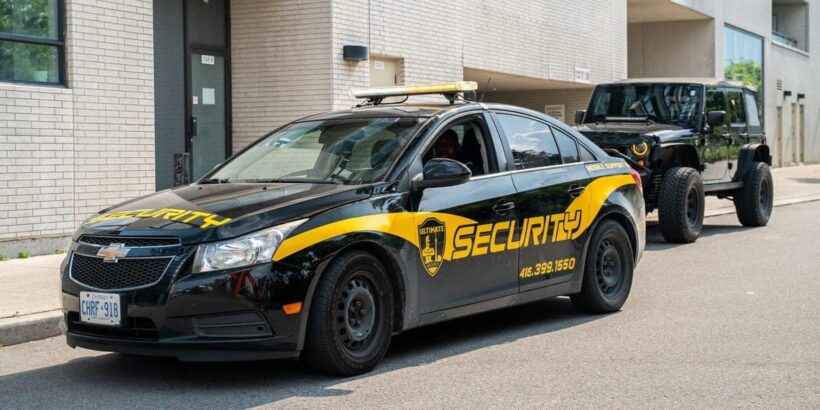
Your vehicles need to look official, but not too official that they’re mistaken for law enforcement. Private security should never be mistaken for police. Not only can that be illegal in many places, but it can also cause public confusion or even hostility.
So, how do you strike the balance? Start by avoiding any design elements that closely copy your local law enforcement vehicles. Steer clear of phrases like “Police” or “Sheriff” (obviously), and avoid badges or seals that resemble those of public agencies.
If your local police cars are black-and-white, you might choose a different base color or use distinctive striping to set yours apart. The idea is to look credible, but clearly not a sworn officer’s vehicle.
Knowing the legal guidelines in your jurisdiction is part of this. Many regions have laws against impersonating police, which extend to vehicle appearance. Even beyond explicit laws, avoid anything that could cause someone to think you’re law enforcement.
That situation could lead to awkward misunderstandings, and it might also land your company in trouble or tarnish your reputation.
Make sure “Security” is the star of your design (as mentioned above) and that your company’s branding is distinct. Design with these precautions in mind, and you’ll have vehicles that look professional in their own right, without borrowing authority from the police.
6. Go for Quality Decals and Professional Installation
Even the best design won’t shine if it’s poorly executed. Using high-quality vinyl decals or wraps and having them installed is vital for a polished appearance. Bubbles, crooked decals, or cheap materials that fade will quickly make your security vehicles look shabby.
It pays to use the same grade of vinyl and reflective material that police and EMS fleets use. Those products are made to last outdoors and maintain their color.
Durable materials also save money in the long run, since your graphics won’t need frequent replacing due to peeling or weather damage.
For this step, you’ll want to call on the help of experienced professionals.
By that, we mean graphic designers who specialize in security or law enforcement fleets and can handle everything from design to production to installation. They’ll make sure your decals meet any necessary standards and apply them evenly and securely.
Find a graphic design company that specializes in security vehicle graphics. They can guide you on materials (for example, whether to use reflective vinyl on certain sections) and design choices that fit your goals—use their expertise to your advantage!

